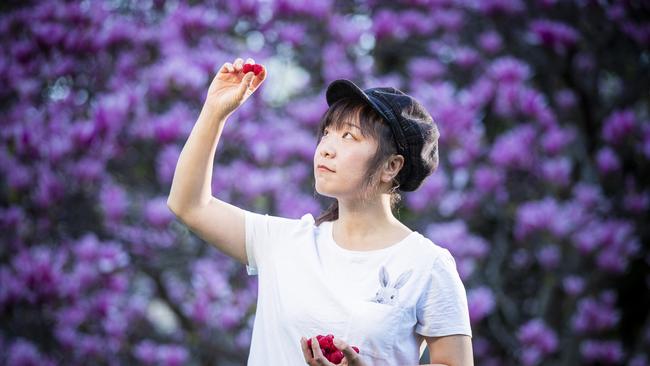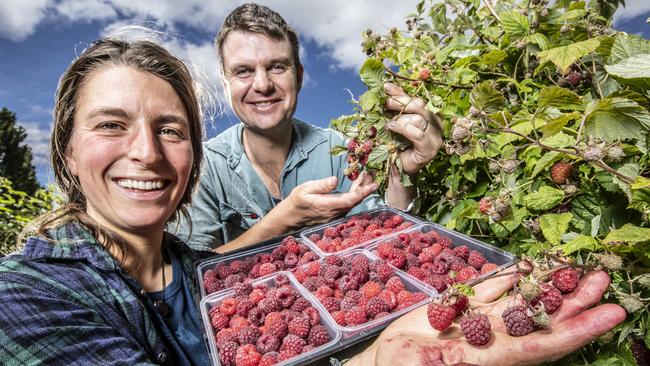Agricultural sector bracing for picking season as 6000 workers locked out of Tasmania
The agricultural sector is sceptical the workforce demand for Tasmania’s harvest season can be filled by locals, as JobKeeper top ups and international workers are considered to get the job done.
News
Don't miss out on the headlines from News. Followed categories will be added to My News.
- 1,151 seasonal workers needed across Tasmania
- The Royal Hotel at Linda on Tasmania’s West Coast has sold
CLOSED borders could devastate fruit growers this summer with a gaping hole left in the Tasmanian workforce by the 6000 seasonal workers now locked out of the state and unavailable due to COVID-19.
Senator Jacqui Lambie has called for urgent planning at the federal level to get Tasmanians in jobs and prevent the sector suffering with produce left “rotting on the ground”.
Senator Lambie said the next month would be crucial and suggested an incentive to get Tasmanians currently receiving the JobSeeker supplement into fruit picking jobs.
“I’ve mentioned to various ministers [in Canberra] and they are looking at me a bit dazed as if to say ‘we don’t really know what to do’,” she said.
The industry has turned to Tasmanian residents to fill the void with more than 1000 jobs currently advertised.
Typically, only 2000 of the 8000 seasonal fruit pickers and packers that carry the Tasmanian industry each summer and support 1500 ongoing jobs are full-time residents.
The are made up of 3500 Working Holiday visa holders, about 1500 Pacific Island Seasonal Worker Program participants and about 1000 international students.

Fruit Growers Tasmania (FGT) CEO Peter Cornish said it would be a “big leap” to round out the workforce with only Tasmanians.
“In the period ahead, work’s available and if people have got the time then hopefully they’re willing to give it a go,” he said.
FGT has made nine recommendations to federal and state government including a campaign to attract workers to the sector and an amendment to the JobSeeker supplement to allow those receiving payments to earn more on top.
Mr Cornish said the state government had supported proposals to allow Pacific Islander workers in the Seasonal Worker Program to enter Tasmania for another six months.
He said those who were in Tasmania at the start of the year and became stuck due to border closures were supported by their sponsors to travel to and work in mainland states.
“We need to work out how to get those back into the state and link them back up with the employers [who sponsor them] under these schemes.”
Minister for Primary Industries Guy Barnett said the government was doing what it can to assist the agriculture sector ahead of the upcoming planting, production and harvest seasons.
It is promoting seasonal jobs in the agriculture industry and developing “contingency support and resources within COVID-safe parameters” to secure a harvest ready workforce.
“There are plenty of jobs available at the moment and Tasmanians are being prioritised,” Mr Barnett said.

Richard Clark from Westerway Raspberry Farm said the workforce demand could not be satisfied with only Tasmanian residents.
He will need 140 seasonal workers this summer but doesn’t know where he will find them.
“Local people are going to do a great job filling some of the labour shortages, but I think it’s naive to think this is the one and only solution,” Mr Clark said.
Mr Clark said options, including ways to bring some of the 80,000 Working Holiday visa holders still in Australia into the state, should be explored.
“We would like as many options on the table as possible.”
New permanent resident Grace Wei moved to Tasmania from China two and a half years ago and started work as a fruit picker at Mr Clark’s family farm before becoming a packer and then a shift supervisor.
She said the job was rewarding and encouraged “good workers” to apply.
“The most important thing in my opinion is attitude,” she said.
“They should have a ‘can do’ attitude.”
The JobSeeker supplement is currently set to end on December 31.


